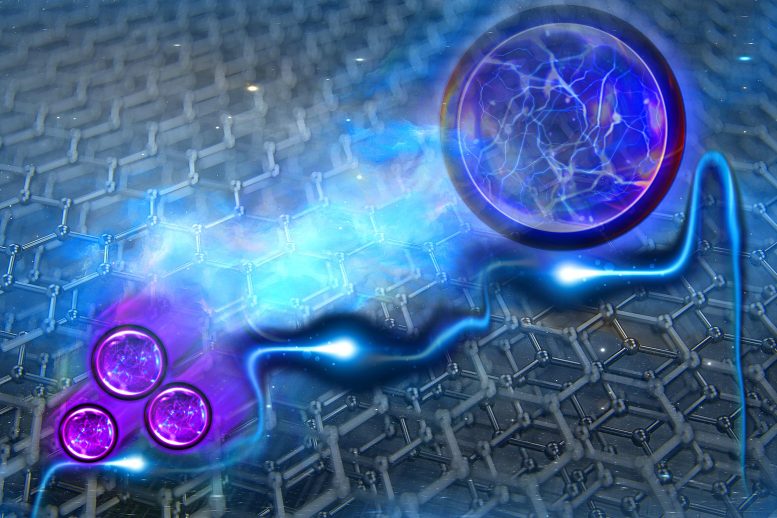
The fractional quantum Hall effect has generally been seen under very high magnetic fields, but MIT physicists have now observed it in simple graphene. In a five-layer graphene/hexagonal boron nitride (hBN) moire superlattice, electrons (blue ball) interact with each other strongly and behave as if they are broken into fractional charges. Credit: Sampson Wilcox, RLE
An exotic electronic state observed by MIT physicists could enable more robust forms of quantum computing.
The electron is the basic unit of electricity, as it carries a single negative charge. This is what we’re taught in high school physics, and it is overwhelmingly the case in most materials in nature.
But in very special states of matter, electrons can splinter into fractions of their whole. This phenomenon, known as “fractional charge,” is exceedingly rare, and if it can be corralled and controlled, the exotic electronic state could help to build resilient, fault-tolerant quantum computers.
To date, this effect, known to physicists as the “fractional quantum Hall effect,” has been observed a handful of times, and mostly under very high, carefully maintained magnetic fields. Only recently have scientists seen the effect in a material that did not require such powerful magnetic manipulation.
Now, MIT physicists have observed the elusive fractional charge effect, this time in a simpler material: five layers of graphene — an atom-thin layer of carbon that stems from graphite and common pencil lead. They report their results on February 21 in the journal Nature.
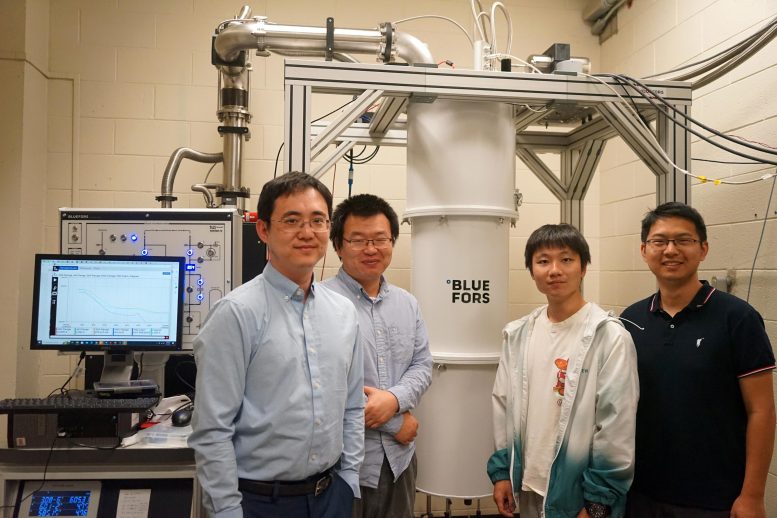
A photo of the team. From left to right: Long Ju, Postdoc Zhengguang Lu, visiting undergraduate Yuxuan Yao, graduate student Tonghang Hang. Credit: Jixiang Yang
They found that when five sheets of graphene are stacked like steps on a staircase, the resulting structure inherently provides just the right conditions for electrons to pass through as fractions of their total charge, with no need for any external magnetic field.
The results are the first evidence of the “fractional quantum anomalous Hall effect” (the term “anomalous” refers to the absence of a magnetic field) in crystalline graphene, a material that physicists did not expect to exhibit this effect.
“This five-layer graphene is a material system where many good surprises happen,” says study author Long Ju, assistant professor of physics at MIT. “Fractional charge is just so exotic, and now we can realize this effect with a much simpler system and without a magnetic field. That in itself is important for fundamental physics. And it could enable the possibility for a type of quantum computing that is more robust against perturbation.”
Ju’s MIT co-authors are lead author Zhengguang Lu, Tonghang Han, Yuxuan Yao, Aidan Reddy, Jixiang Yang, Junseok Seo, and Liang Fu, along with Kenji Watanabe and Takashi Taniguchi at the National Institute for Materials Science in Japan.
A Bizarre State
The fractional quantum Hall effect is an example of the weird phenomena that can arise when particles shift from behaving as individual units to acting together as a whole. This collective “correlated” behavior emerges in special states, for instance when electrons are slowed from their normally frenetic pace to a crawl that enables the particles to sense each other and interact. These interactions can produce rare electronic states, such as the seemingly unorthodox splitting of an electron’s charge.
In 1982, scientists discovered the fractional quantum Hall effect in heterostructures of gallium arsenide, where a gas of electrons confined in a two-dimensional plane is placed under high magnetic fields. The discovery later won the group a Nobel Prize in Physics.
“[The discovery] was a very big deal, because these unit charges interacting in a way to give something like fractional charge was very, very bizarre,” Ju says. “At the time, there were no theory predictions, and the experiments surprised everyone.”
Those researchers achieved their groundbreaking results using magnetic fields to slow down the material’s electrons enough for them to interact. The fields they worked with were about 10 times stronger than what typically powers an MRI machine.
In August 2023, scientists at the University of Washington reported the first evidence of fractional charge without a magnetic field. They observed this “anomalous” version of the effect, in a twisted semiconductor called molybdenum ditelluride. The group prepared the material in a specific configuration, which theorists predicted would give the material an inherent magnetic field, enough to encourage electrons to fractionalize without any external magnetic control.
The “no magnets” result opened a promising route to topological quantum computing — a more secure form of quantum computing, in which the added ingredient of topology (a property that remains unchanged in the face of weak deformation or disturbance) gives a qubit added protection when carrying out a computation. This computation scheme is based on a combination of fractional quantum Hall effect and a superconductor. It used to be almost impossible to realize: One needs a strong magnetic field to get fractional charge, while the same magnetic field will usually kill the superconductor. In this case the fractional charges would serve as a qubit (the basic unit of a quantum computer).
Making Steps
That same month, Ju and his team happened to also observe signs of anomalous fractional charge in graphene — a material for which there had been no predictions for exhibiting such an effect.
Ju’s group has been exploring electronic behavior in graphene, which by itself has exhibited exceptional properties. Most recently, Ju’s group has looked into pentalayer graphene — a structure of five graphene sheets, each stacked slightly off from the other, like steps on a staircase. Such pentalayer graphene structure is embedded in graphite and can be obtained by exfoliation using Scotch tape. When placed in a refrigerator at ultracold temperatures, the structure’s electrons slow to a crawl and interact in ways they normally wouldn’t when whizzing around at higher temperatures.
In their new work, the researchers did some calculations and found that electrons might interact with each other even more strongly if the pentalayer structure were aligned with hexagonal boron nitride (hBN) — a material that has a similar atomic structure to that of graphene, but with slightly different dimensions. In combination, the two materials should produce a moiré superlattice — an intricate, scaffold-like atomic structure that could slow electrons down in ways that mimic a magnetic field.
“We did these calculations, then thought, let’s go for it,” says Ju, who happened to install a new dilution refrigerator in his MIT lab last summer, which the team planned to use to cool materials down to ultralow temperatures, to study exotic electronic behavior.
The researchers fabricated two samples of the hybrid graphene structure by first exfoliating graphene layers from a block of graphite, then using optical tools to identify five-layered flakes in the steplike configuration. They then stamped the graphene flake onto an hBN flake and placed a second hBN flake over the graphene structure. Finally, they attached electrodes to the structure and placed it in the refrigerator, set to near absolute zero.
As they applied a current to the material and measured the voltage output, they started to see signatures of fractional charge, where the voltage equals the current multiplied by a fractional number and some fundamental physics constants.
“The day we saw it, we didn’t recognize it at first,” says first author Lu. “Then we started to shout as we realized, this was really big. It was a completely surprising moment.”
“This was probably the first serious samples we put in the new fridge,” adds co-first author Han. “Once we calmed down, we looked in detail to make sure that what we were seeing was real.”
With further analysis, the team confirmed that the graphene structure indeed exhibited the fractional quantum anomalous Hall effect. It is the first time the effect has been seen in graphene.
“Graphene can also be a superconductor,” Ju says. “So, you could have two totally different effects in the same material, right next to each other. If you use graphene to talk to graphene, it avoids a lot of unwanted effects when bridging graphene with other materials.”
For now, the group is continuing to explore multilayer graphene for other rare electronic states.
“We are diving in to explore many fundamental physics ideas and applications,” he says. “We know there will be more to come.”
Reference: “Fractional quantum anomalous Hall effect in multilayer graphene” by Zhengguang Lu, Tonghang Han, Yuxuan Yao, Aidan P. Reddy, Jixiang Yang, Junseok Seo, Kenji Watanabe, Takashi Taniguchi, Liang Fu and Long Ju, 21 February 2024, Nature.
DOI: 10.1038/s41586-023-07010-7
This research is supported in part by the Sloan Foundation, and the National Science Foundation.


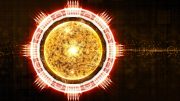


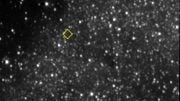
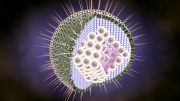

Unsubscribe
Very good!
Please answer:
1. What is the physical reality of quantum mechanics?
2. What is the physical essence of the exotic electronic state?
3. Why would physics today prefer to use a cat rather than mathematical models to understand and study quantum mechanics?
and so on.
The branch of mathematics known as topology has become a cornerstone of modern physics. The perpetually swirling topological vortices defy traditional physics’ expectations. A physical properties of topological vortices is their to spontaneously begin to change periodically in time, even though the system does not experience corresponding periodic interference. Therefore, in the interaction of topological vortices, time is both absolute and relative,and physics often requires treating space and time at the same level.
Low-dimensional spacetime matter is the foundation of high-dimensional spacetime matter. Low-dimensional spacetime matter (such as topological vortex) can form new material structures and derive more complex physical properties via interactions and self-organization. It is extremely wrong and irresponsible to imagine low dimensional spacetime matter using high-dimensional spacetime matter.
Science must follow mathematical rules. For example, the Standard Model (SM) is considered to be one of the most significant achievements of physics in the 20th century. However, the magnetic moment of μ particle is larger than expected, revealed by a g-2 experiment at Fermilab, suggests that the established theory (such as SM) of fundamental particles is incomplete. Furthermore, the SM omitting gravitation, it not involved the time problem and when the particle movement starts. Mathematics is the foundation of science. Physics must respect the scientific nature of mathematics and mathematical models. The SM must be based on mathematical models in order to be scientific, convincing, and in line with natural laws.
I hope researchers are not fooled by the pseudoscientific theories of the Physical Review Letters (PRL), and hope more people dare to stand up and fight against rampant pseudoscience.
The so-called academic journals (such as Physical Review Letters, Nature, Science, etc.) firmly believe that two high-dimensional spacetime objects (such as two sets of cobalt-60) rotating in opposite directions can be transformed into two objects that mirror each other, is a typical case of pseudoscience rampant.
If researchers are really interested in Science and Physics, you can browse https://zhuanlan.zhihu.com/p/643404671 and https://zhuanlan.zhihu.com/p/595280873.
The stacking of graphene to several layers has great levels to see, I Read the part about how the breakdown of the electron was observed as in stepping threw the levels to fractional, had a thought about stepping threw a stepping pyramid shape stacked graphene layers, the direction of applied field from top to bottom or reverse.